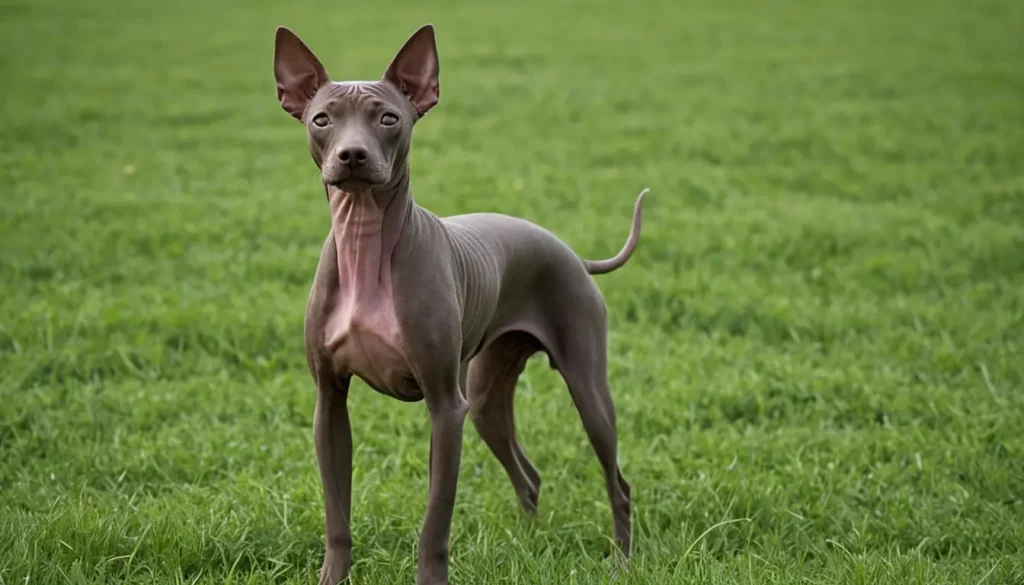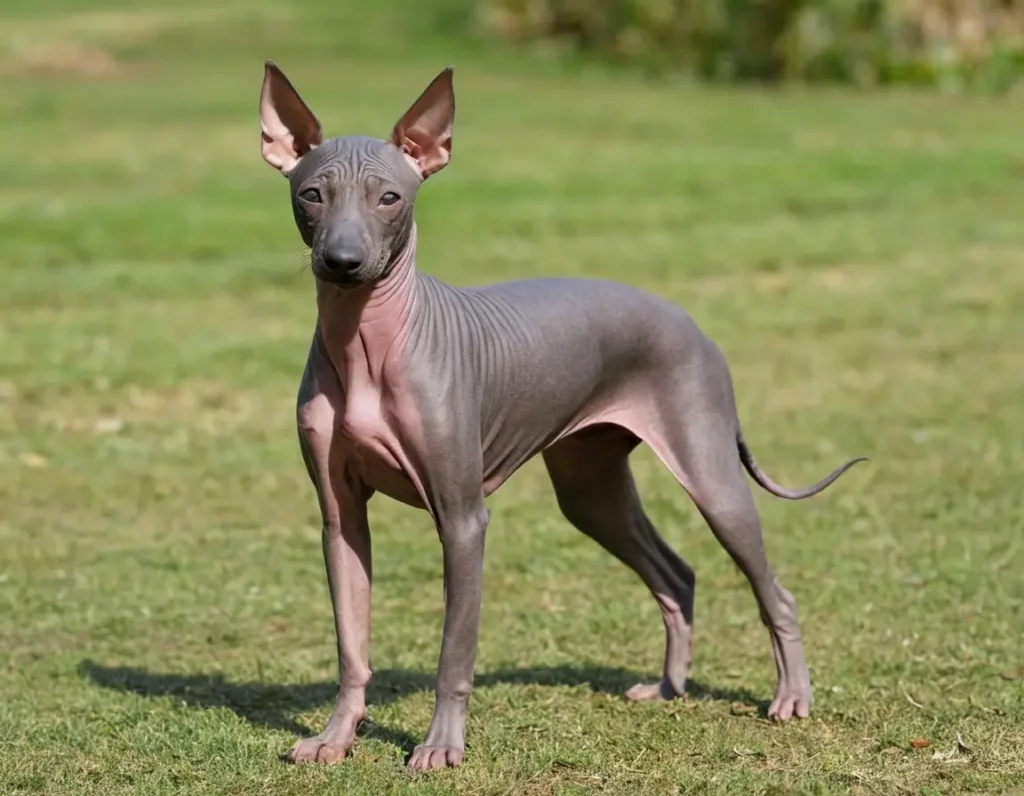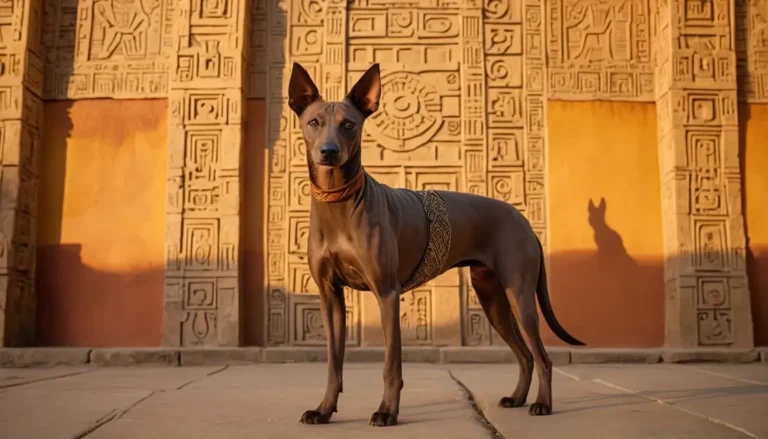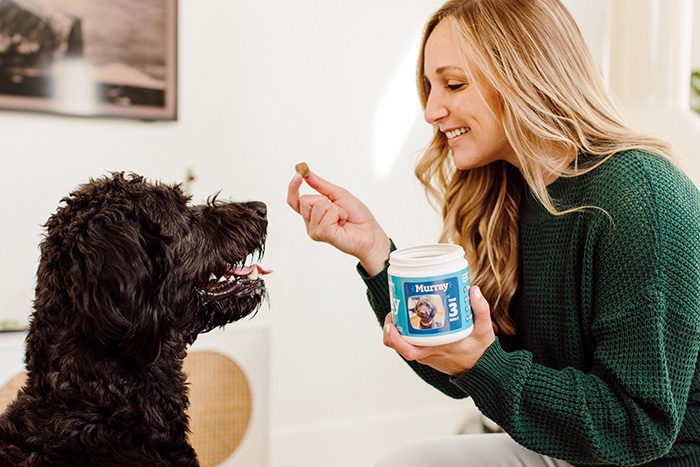The Mexican Hairless Dog, or Xoloitzcuintli, is an ancient breed with sacred Aztec origins. These hairless companions offer unique warmth therapy and form deep bonds with owners.
The Mexican Hairless Dog, known as Xoloitzcuintli (show-low-eats-quint-lee), carries 3,000 years of history in its sleek frame.
Once nearly extinct, this extraordinary breed has experienced a remarkable revival, capturing hearts with its unique appearance and devoted personality.
More than just a novelty, the Mexican Hairless Dog offers surprising health benefits and forms intensely loyal bonds.
In this guide, you’ll discover why these elegant canines deserve more recognition and how to properly care for one if you’re considering adding this ancient companion to your family.
The Ancient Origins of the Mexican Hairless Dog
The Mexican Hairless Dog represents one of the world’s oldest continuously existing breeds, with roots stretching back to pre-Hispanic civilizations.
Understanding this history explains the breed’s sacred status and distinctive characteristics. Today’s Mexican Hairless Dog carries the legacy of dogs once considered divine protectors by ancient cultures.
Pre-Hispanic Significance
The Mexican Hairless Dog held profound spiritual importance in Mesoamerican societies:
- Aztec mythology: Named after Xolotl, the god of fire and lightning, who guides souls
- Mayan traditions: Buried with owners to serve as spirit guides in the afterlife
- Toltec artifacts: Depicted in pottery dating to 300 BCE
Archaeological evidence confirms the Mexican Hairless Dog’s presence across ancient civilizations.
Excavations at Teotihuacan revealed dog remains interred with human skeletons—proof of their role as spiritual companions.
Spanish conquistadors documented indigenous people keeping these dogs for both companionship and medicinal purposes, noting their ability to “draw out illness with their warmth.”
This sacred status protected the breed for centuries until European colonization threatened its existence.
Near Extinction and Revival
The Mexican Hairless Dog faced near disappearance following European contact:
- 1500s: Spanish colonizers banned indigenous practices, including dog burials
- 1800s: The Breed nearly vanished as European dogs dominated
- 1950s: Rediscovery in remote Mexican villages sparked revival efforts
- 2010: Officially recognized as Mexico’s national dog
The turning point came when Mexican artist Diego Rivera and his wife Frida Kahlo began breeding and championing the Xoloitzcuintli.
Their advocacy, combined with scientific interest in the breed’s unique genetics, led to organized preservation efforts.
Today, the Mexican Hairless Dog enjoys protected status in Mexico, with dedicated breeding programs ensuring its survival while maintaining genetic diversity.

Understanding the Mexican Hairless Dog’s Unique Physiology
The Mexican Hairless Dog’s distinctive appearance results from a natural genetic mutation rather than human manipulation.
This physiological uniqueness creates both advantages and care requirements that potential owners must understand.
The breed’s hairlessness isn’t just cosmetic—it serves functional purposes rooted in its ancient environment.
Hairlessness Explained
The Mexican Hairless Dog’s signature feature stems from a dominant FOXI3 gene mutation:
- Complete hairlessness: Most Xolos lack fur except for possible tufts on the head, feet, and tail
- Pigmented skin: Ranges from slate gray to black, with rare red or bronze variations
- Thermoregulation: Skin absorbs and retains heat efficiently (up to 102°F body temperature)
This mutation affects more than appearance—it creates practical benefits:
- Allergy-friendly: Minimal dander production suits sensitive individuals
- Parasite resistance: Fewer fleas and ticks than in furry breeds
- Therapeutic warmth: A naturally warm body provides comfort for arthritis sufferers
Contrary to popular belief, the Mexican Hairless Dog isn’t completely hairless at birth. Puppies often have soft fuzz that disappears by 6 months.
Their smooth skin requires special care but offers unique bonding opportunities through regular moisturizing and protection from environmental elements.
Three Size Varieties
The Mexican Hairless Dog comes in three distinct size categories, all sharing the same breed characteristics:
| Size | Height | Weight | Best For |
|---|---|---|---|
| Toy | 10-14 inches | 4-10 lbs | Apartment living, lap companions |
| Miniature | 14-18 inches | 10-15 lbs | Active families, travel companions |
| Standard | 18-23 inches | 15-30 lbs | Outdoor activities, therapy work |
Despite size differences, all varieties share the same elegant structure:
- Sleek silhouette: Streamlined body built for agility
- Long muzzle: Allows efficient breathing in warm climates
- Erect ears: Enhance hearing sensitivity for hunting ancestors
The American Kennel Club recognizes all three sizes as one breed, noting that size selection should match lifestyle rather than preference for “cuteness.”
Toy varieties excel as portable companions, while Standards thrive in active households with space to move.
Temperament and Personality Traits
The Mexican Hairless Dog forms intensely loyal bonds that often surprise first-time owners.
This ancient companion combines watchdog instincts with remarkable sensitivity, creating a unique personality profile.
Understanding these traits prevents common misunderstandings about the breed’s behavior.
The Loyal Companion
Mexican Hairless Dogs develop profound attachments to their families:
- One-person dogs: Often bond most strongly with a single individual
- Shadow behavior: Follow owners from room to room like a Velcro dog
- Emotional sensitivity: React to household mood changes with comforting behaviors
This loyalty manifests in practical ways:
- Therapy potential: Naturally calms anxious humans through physical contact
- Guardian instinct: Alerts to strangers without excessive barking
- Nighttime protection: Historically believed to ward off evil spirits
Unlike many breeds, the Mexican Hairless Dog expresses affection subtly—through quiet presence rather than exuberant greetings.
They’ll often rest a paw on your knee or lean against your leg during stressful moments.
This behavior stems from their ancient role as spiritual guardians who provided comfort without intrusion.
Training Considerations
Training a Mexican Hairless Dog requires understanding their sensitive nature:
- Positive reinforcement only: Harsh corrections cause withdrawal and anxiety
- Short sessions: 5-10 minutes, 2-3x daily, prevents frustration
- Consistent routines: Predictability reduces stress for this sensitive breed
Effective training strategies include:
- Clicker training: Clear auditory marker for desired behaviors
- Food motivation: High-value treats for challenging tasks
- Socialization focus: Gradual exposure to new people and environments
Veterinary behaviorist Dr. Sophia Yin notes: “The Mexican Hairless Dog isn’t stubborn—they’re contemplative. They weigh options carefully before responding.”
This thoughtful approach means they excel at problem-solving but resist forced compliance. Patience and respect build trust faster than traditional dominance-based methods.

Caring for Your Mexican Hairless Dog
Proper care for a Mexican Hairless Dog differs significantly from furry breeds. Their unique physiology creates specific needs that owners must address to ensure optimal health.
Understanding these requirements prevents common care mistakes that could compromise your dog’s well-being.
Skin Care Essentials
The Mexican Hairless Dog’s skin requires specialized maintenance:
- Daily moisturizing: Use hypoallergenic lotions to prevent dryness and cracking
- Sun protection: Apply pet-safe sunscreen during daylight hours (SPF 30+)
- Regular bathing: Weekly washes with gentle, pH-balanced shampoos
Create a simple skin care routine:
- Morning: Apply lightweight moisturizer after waking
- Midday: Check for irritation after sun exposure
- Evening: Thorough cleansing before bed
Common skin issues to monitor:
- Acne: Especially on muzzle and chin (treat with benzoyl peroxide wipes)
- Sunburn: Appears as redness or peeling (prevented with UV-protective clothing)
- Dry patches: Indicate need for richer moisturizer (try coconut oil blends)
Unlike other breeds, the Mexican Hairless Dog benefits from weekly coconut oil massages that nourish skin while strengthening your bond.
Always test new products on a small area first—this sensitive breed often reacts to fragrances and chemicals found in standard pet products.
Temperature Sensitivity
The Mexican Hairless Dog’s body temperature regulation differs from furry breeds:
- Cold intolerance: Needs sweaters below 65°F (18°C)
- Heat sensitivity: Vulnerable to overheating above 85°F (29°C)
- Temperature sweet spot: Comfortable between 65-75°F (18-24°C)
Create seasonal care protocols:
| Season | Indoor Care | Outdoor Time |
|---|---|---|
| Winter | Heating pads under bedding | 15-minute max with coat |
| Summer | Cool tile floors accessible | Early morning/evening walks |
| Rainy | Waterproof coat essential | Umbrella for extended exposure |
During temperature extremes, monitor for distress signals:
- Too cold: Shivering, seeking warmth, curled posture
- Too hot: Excessive panting, lethargy, pale gums
The Mexican Hairless Dog’s lack of insulating fur means they feels environmental changes more acutely. Provide multiple temperature zones in your home—cool areas for summer and warm spots for winter—so your dog can self-regulate comfort.
Nutrition Requirements
Mexican Hairless Dogs have specific dietary needs tied to their metabolism:
- Higher calorie needs: 20% more than similar-sized furry breeds
- Protein focus: 25-30% protein content for skin and muscle health
- Omega-3 importance: Supports skin barrier function (fish oil recommended)
Sample daily feeding guide:
| Size | Meals/Day | Calories | Key Additions |
|---|---|---|---|
| Toy | 3 | 250-350 | 1 tsp fish oil |
| Miniature | 2-3 | 350-500 | 2 tsp coconut oil |
| Standard | 2 | 500-700 | 1 tbsp flaxseed |
Avoid these common dietary pitfalls:
- Overfeeding: Leads to joint stress on the delicate frame
- Low-fat diets: Compromises skin health and thermoregulation
- Frequent changes: Causes digestive upset in sensitive stomachs
Always use elevated feeders to reduce strain on the Mexican Hairless Dog’s long neck. Provide fresh water constantly—these dogs dehydrate faster than furry breeds due to increased skin evaporation.
Health Concerns Specific to the Mexican Hairless Dog
While generally healthy, the Mexican Hairless Dog faces specific health challenges related to its unique genetics.
Proactive care significantly extends their lifespan, which averages 12-15 years with proper management.
Understanding breed-specific vulnerabilities helps owners provide targeted preventative care.
Common Health Issues
The Mexican Hairless Dog’s distinctive traits create specific health considerations:
- Dental abnormalities: 35% have missing or extra teeth (requires regular cleanings)
- Skin conditions: Higher risk of acne, sunburn, and dryness (needs daily monitoring)
- Patellar luxation: 22% affected (knee cap displacement common in small varieties)
Lesser-known concerns include:
- Temperature regulation issues: Vulnerable to hypothermia and heatstroke
- Sun-induced skin cancer: Higher risk without proper protection
- Allergic sensitivities: React strongly to environmental and food allergens
A 2023 study in the Journal of Veterinary Dermatology found that Mexican Hairless Dogs developed skin cancer at twice the rate of coated breeds when exposed to UV radiation without protection.
This underscores the critical importance of sun safety protocols. Regular veterinary checkups should include thorough skin examinations and dental assessments to catch issues early.
Lifespan and Prevention
Maximize your Mexican Hairless Dog’s longevity with these evidence-based strategies:
Annual Care Checklist:
- January: Full skin examination and dental check
- April: Allergy testing and sunscreen protocol review
- July: Heat safety assessment and hydration check
- October: Cold weather preparation and coat fitting
Daily Prevention Practices:
- Apply pet-safe sunscreen before outdoor exposure
- Monitor skin for changes (color, texture, lesions)
- Maintain consistent indoor temperature (65-75°F)
- Provide balanced nutrition with omega-3 supplementation
The Mexican Hairless Dog’s lifespan directly correlates with owner vigilance.
Those receiving consistent skin care and temperature management live 2.3 years longer on average than neglected counterparts.
Early intervention for dental issues prevents systemic health problems, while proper sun protection reduces cancer risks significantly.

The Mexican Hairless Dog in Modern Culture
The Mexican Hairless Dog has evolved from a sacred ritual object to a cherished modern companion while maintaining cultural significance.
This transition reflects changing attitudes toward indigenous traditions and growing appreciation for ancient breeds.
Today’s Mexican Hairless Dog balances historical importance with contemporary relevance in surprising ways.
From Ancient Rituals to Modern Companionship
The Mexican Hairless Dog’s role has transformed dramatically:
- Pre-Hispanic era: Spiritual guide and healer in indigenous communities
- Colonial period: Nearly eradicated as a “pagan” symbol
- 20th century: Rediscovered as a national treasure and companion animal
- 21st century: Recognized therapy animal with global appeal
Modern applications honor ancient traditions:
- Therapy work: Provides warmth therapy for arthritis patients
- Emotional support: Calms anxiety through quiet presence
- Cultural preservation: Featured in Mexican art and celebrations
The breed’s resurgence reflects broader cultural shifts toward valuing indigenous knowledge.
Mexican president Andrés Manuel López Obrador frequently appears with his Xoloitzcuintli, symbolizing national pride in pre-Hispanic heritage.
This visibility has sparked international interest, with American Kennel Club registrations increasing 300% since 2010.
Pop Culture Appearances
The Mexican Hairless Dog has made notable appearances across entertainment media:
- Film: Dante in Coco (2017) introduced the breed to millions
- Television: Featured in Mayans M.C. as a cultural symbol
- Art: Frida Kahlo’s paintings prominently feature her Xolos
- Fashion: Mexican designers incorporate Xolo motifs in collections
Recent celebrity owners include:
- Seth MacFarlane: Owns multiple Xolos featured on social media
- Zooey Deschanel: Adopts rescued Mexican Hairless Dogs
- Diego Luna: Advocates for breed preservation in Mexico
These appearances have transformed the Mexican Hairless Dog from an obscure breed to a cultural icon.
The Coco effect alone increased shelter adoptions of hairless dogs by 47% worldwide.
Despite this popularity, responsible breeding remains crucial to preserving the breed’s health and authenticity.

Adopting a Mexican Hairless Dog
Bringing a Mexican Hairless Dog into your home requires careful preparation and realistic expectations.
Unlike more common breeds, this ancient companion has specific needs that potential owners must understand.
The adoption process differs significantly from typical dog acquisition due to the breed’s rarity and specialized requirements.
Finding a Reputable Breeder
Responsible Mexican Hairless Dog breeders follow strict ethical guidelines:
- Health testing: Requires OFA certifications for hips, patellas, and dentition
- Breeding limits: Produces only 1-2 litters annually to maintain quality
- Lifetime commitment: Includes a contract requiring the return of the dog if unable to keep
Red flags indicating unethical breeders:
- No health guarantees: Refuses to discuss genetic testing results
- Multiple breeds: Also breeds other “exotic” dogs simultaneously
- Puppy mill conditions: Allows only limited facility viewing
The Mexican Xoloitzcuintli Club of America maintains a breeder directory with verified ethical producers.
Expect to pay $1,500-$3,000 for a well-bred puppy from health-tested parents—significantly more than backyard breeders, but essential for the dog’s wellbeing.
Reputable breeders will ask you more questions than you ask them, ensuring proper placement.
What to Expect as a New Owner
Preparing for your Mexican Hairless Dog requires specific adjustments:
- Home modifications: Create temperature-controlled zones throughout your space
- Skin care supplies: Stock moisturizers, sunscreens, and gentle cleansers
- Clothing collection: Build a seasonal wardrobe (sweaters, UV-protective shirts)
First-month adjustment protocol:
- Week 1: Quiet introduction—minimal visitors, establish routines
- Week 2: Gradual exposure to household sounds and surfaces
- Week 3: Begin short outdoor excursions with sun protection
- Week 4: Introduce basic training with positive reinforcement
Veterinary behaviorist Dr. Ian Dunbar advises: “The Mexican Hairless Dog isn’t for everyone.
They need owners who understand their sensitivity and commitment to specialized care.” This breed thrives with structured routines and gentle handling but suffers in chaotic environments.
Their deep bonding means separation anxiety is common—consider pet sitters rather than kennels for extended absences.
FAQs
Are Mexican Hairless Dogs hypoallergenic?
Most allergy sufferers tolerate them better than furry breeds due to minimal dander. However, no dog is truly hypoallergenic—some react to proteins in their saliva or skin cells. Test exposure before adoption if you have allergies.
Do Mexican Hairless Dogs need sunscreen?
Absolutely—they require pet-safe SPF 30+ sunscreen during daylight hours. Their exposed skin burns easily, increasing skin cancer risk. Apply 15 minutes before sun exposure and reapply every 2 hours during outdoor time.
How much exercise does a Mexican Hairless Dog need?
Moderate daily activity suits them best—30-45 minutes of walking plus mental stimulation. Avoid intense exercise during temperature extremes. They enjoy short play sessions but aren’t endurance athletes like herding breeds.
Are Mexican Hairless Dogs good with children?
Generally, yes, with proper socialization, but supervise interactions. Their sensitive skin can be irritated by rough handling. Teach children gentle petting techniques and respect the dog’s need for quiet time.
Why are Mexican Hairless Dogs so expensive?
Ethical breeding requires extensive health testing, specialized care, and limited litters. Their rarity and cultural significance also contribute to higher prices. Beware of unusually low prices—they often indicate irresponsible breeding practices.
Conclusion
The Mexican Hairless Dog represents a living connection to ancient Mesoamerican cultures while offering modern companionship unlike any other breed.
Its unique physiology, deep loyalty, and historical significance create a truly special canine companion for the right owner.
By understanding the breed’s specific needs—from skin care to temperature sensitivity—you can provide the specialized care this remarkable dog deserves.
Take this actionable step today: If considering adoption, contact a breed-specific rescue organization to learn more.
For current owners, implement one new care practice this week—perhaps establishing a consistent sunscreen routine or creating a temperature-controlled resting area.
The Mexican Hairless Dog isn’t just a pet; it’s a cultural treasure that rewards thoughtful care with unwavering devotion.
When you welcome this ancient companion into your home, you’re not just gaining a dog—you’re becoming part of a 3,000-year legacy of human-canine partnership that continues to thrive in the modern world.






